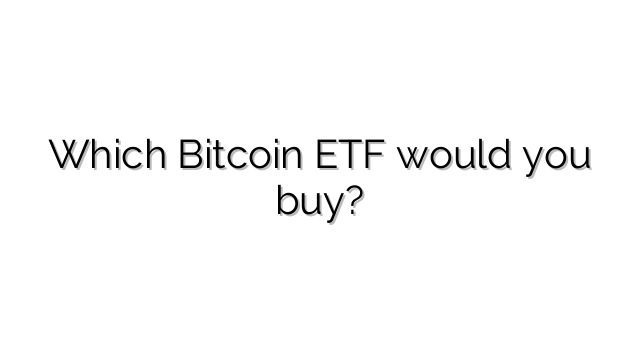In Which Ways Can I Invest in Bitcoin? (Complete Guide)
This community poll maps the main ways investors get Bitcoin exposure—from direct spot holdings
to futures, ETFs, options, equity treasuries, and
basis trades. Below is a structured guide with pros/cons, use cases, and key risks.
Educational only—no financial advice.
1) Spot Bitcoin (on-chain or exchange)
Direct ownership of BTC. Maximum sovereignty and portability; requires secure key management.
- Pros: Full control, 24/7 settlement, no fund fee.
- Cons: Self-custody operational risk; exchange custody = counterparty risk.
- Best for: Long-term holders and users who want Lightning or self-custody.
2) Bitcoin futures (dated, e.g., CME)
Listed, regulated contracts with monthly/quarterly expiries; common for hedging and basis trades.
- Pros: Transparent margin; no wallet handling.
- Cons: Roll management; curve shape (contango/backwardation) impacts P&L.
- Best for: Hedgers and advanced traders.
3) Perpetual futures (perps)
No expiry; funding payments tether price to spot. Popular for leverage; monitor liquidation risk.
- Pros: Flexible sizing; continuous market.
- Cons: Funding costs; venue/custody risk.
- Best for: Active traders.
4) Bitcoin ETFs (spot)
Brokerage-friendly exposure that aims to track spot after fees; no on-chain control.
- Pros: Simple access; clean statements; options available on some tickers.
- Cons: Expense ratio; spreads; tracking difference.
- Best for: Traditional portfolios and tax-advantaged accounts (where allowed).
5) Options on Bitcoin futures
Calls/puts on listed BTC futures (e.g., CME). Enable defined-risk hedges and income overlays.
- Pros: Regulated options market; strategy variety.
- Cons: Options greeks + futures margin interplay; liquidity varies by tenor/strike.
- Best for: Options-literate traders.
6) Options on Bitcoin ETFs
Covered calls, cash-secured puts, collars on spot BTC ETFs in a standard brokerage account.
- Pros: Familiar mechanics; income or protection overlays.
- Cons: ETF-specific quirks; spread/IV and assignment risks.
- Best for: Income overlays or defined-risk hedges on ETF holdings.
7) Crypto-native BTC options (e.g., Deribit)
Venue-native options referencing a spot index and settling in crypto. Not US-listed “spot options,” but functionally similar for traders.
- Pros: Deep strikes/expiries; active market.
- Cons: Venue/custody and regional-access risks.
- Best for: Experienced options traders in the crypto ecosystem.
8) Bitcoin treasuries (equities holding BTC)
Stocks of companies with significant BTC per share. Indirect exposure with equity beta and corporate actions.
- Pros: Brokerage-friendly; often optionable; narrative/coverage tailwinds.
- Cons: Dilution/leverage risk; premium/discount vs. spot; currency/accounting effects.
- Best for: Equity investors seeking BTC sensitivity.
9) Options on Bitcoin treasuries (e.g., MSTR, miners)
Options on BTC-sensitive equities for income (covered calls), entries (puts), or hedges.
- Pros: Liquid chains; many strategies.
- Cons: Earnings events, vol crush, slippage.
- Best for: Options traders comfortable with equity idiosyncrasies.
10) Cash-and-carry / basis trade
Long spot (or ETF) + short futures of equal notional to capture the annualized basis (minus fees/funding).
- Pros: Lower beta to spot; carry-like return profile.
- Cons: Operational complexity; margin and execution risks; basis can compress.
- Best for: Advanced traders with strict process control.
11) Other
Depending on region: CFDs/spread bets, European ETPs/ETNs, or structured products. Share your approach in the comments.
Quick comparison table
| Method | Main use | Key pros | Key cons |
|---|---|---|---|
| Spot Bitcoin | Core exposure | Sovereignty; no fund fee | Self-custody ops; exchange risk |
| Dated futures | Hedge / basis | Listed venue | Roll/curve impact |
| Perps | Tactical/leverage | Flexible sizing | Funding/liquidation risk |
| Spot ETFs | Brokerage access | Simple admin | Fees & tracking |
| Options on futures | Defined-risk overlays | Regulated | Greeks + margin |
| Options on ETFs | Income/hedges | Brokerage-friendly | ETF idiosyncrasies |
| Crypto-native options | Active options trading | Deep markets | Venue/custody risk |
| BTC treasuries | Indirect BTC + equity | Often optionable | Dilution/leverage |
| Options on treasuries | Income/entries | Strategy variety | Earnings/vol crush |
| Cash-and-carry | Carry/basis | Lower spot beta | Operational complexity |
Risk checklist
- Leverage: Futures/perps/options amplify P&L—know margin, liquidation, and assignment.
- Counterparty: Prefer regulated venues or transparent, well-capitalized providers.
- Costs & tracking: ETF fees/spreads; futures funding/roll; options slippage/IV changes.
- Operations: Self-custody needs backups (metal), passphrases, and test restores.
- Taxes: Jurisdiction-specific; keep detailed records.
FAQ
Are there “options on spot BTC” in the US?
No—US-listed options are on BTC futures or on BTC ETFs. Crypto-native venues offer BTC options referencing a spot index and settling in crypto.
Which method is best?
It depends on your goal (core holding, hedge, income, leverage), constraints (brokerage, regulation), and skill/ops capacity.
Vote above (multi-select) and share the poll—broader samples make the results more useful.





